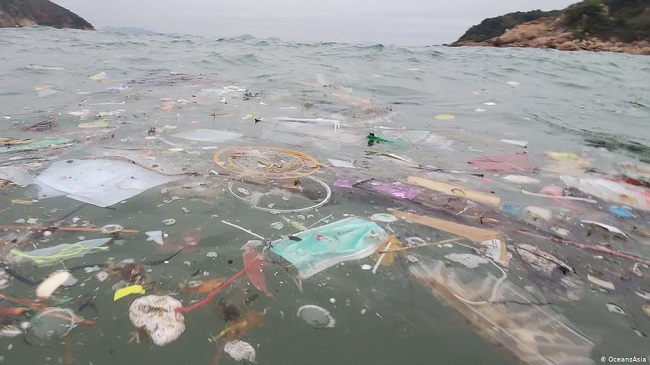Tens of thousands of tonnes of extra medical waste from the response to the COVID-19 pandemic has put tremendous strain on health care waste management systems around the world, the World Health Organisation (WHO) said on Tuesday, February 1, 2022.

According to the agency’s global analysis of “healthcare waste in the context of COVID-19: status, impacts and recommendations”, the mainly plastic trash threatens human and environmental health, and exposes a dire need to improve waste management practices.
The sight of discarded masks littering pavements, beaches and roadsides, has become a universal symbol of the on-going pandemic worldwide.
Speaking to journalists in Geneva, the agency’s chief, Tedros Ghebreyesus, said the report, “is a reminder that although the pandemic is the most severe health crisis in a century, it is connected with many other challenges that countries face.”
The estimates are based on the approximately 87,000 tonnes of personal protective equipment (PPE) procured between March 2020 and November 2021 and shipped through a joint UN emergency initiative.
Most of this equipment is expected to have ended up as waste.
For the agency, this is just an initial indication of the scale of the problem. It does not consider any of the COVID-19 commodities procured outside of the initiative, nor waste generated by the public, like disposable masks.
The analysis points out that over 140 million test kits, with a potential to generate 2,600 tonnes of non-infectious waste (mainly plastic) – and 731,000 litres of chemical waste (equivalent to one-third of an Olympic-size swimming pool – have been shipped.
At the same time, over eight billion doses of vaccine have been administered globally producing 144,000 tonnes of additional waste in the form of syringes, needles and safety boxes.
As the UN and countries grappled with the immediate task of securing and quality-assuring supplies of PPE, less attention and resources were devoted to the safe and sustainable management of this waste.
For the Executive Director of WHO’s Health Emergencies Programme, Dr Michael Ryan, this type of protection is vital, “but it is also vital to ensure that it can be used safely without impacting on the surrounding environment.”
This means having effective management systems in place, including guidance for health workers on what to do.
Today, 30 per cent of healthcare facilities (60 per cent in the least developed countries) are not equipped to handle existing waste loads, let alone the additional waste.
This can expose health workers to needle injuries, burns and pathogenic microorganisms, said WHO.
Communities living near poorly managed landfills and waste disposal sites can be impacted by contaminated air from burning waste, poor water quality, or disease carrying pests.
The Director for Environment, Climate Change and Health at WHO, Maria Neira, believes the pandemic has forced the world to reckon with this problem.
“Significant change at all levels, from the global to the hospital floor, in how we manage the healthcare waste stream, is a basic requirement of climate-smart health care systems,” she said.
The report lays out a set of recommendations such as eco-friendly packaging and shipping; purchasing safe and reusable PPE, made of recyclable or biodegradable materials.
The recommendations included investment in non-burn waste treatment technologies; and investments in the recycling sector to ensure materials, like plastics, can have a second life.
For WHO, the health crisis also offers an opportunity to develop strong national policies and regulations, change behaviours, and increase budgets.
The Chair of the Health Care Waste Working Group, Dr Anne Woolridge, noted that there was a growing appreciation that health investments must consider environmental and climate implications.
“For example, safe and rational use of PPE will not only reduce environmental harm from waste, it will also save money, reduce potential supply shortages and further support infection prevention by changing behaviours,” she explained.
January 30 marked two years since WHO declared COVID-19 a public health emergency of international concern, the highest level of alarm under international law.
At the time, there were fewer than 100 cases and no deaths reported outside China.
Two years later, more than 370 million cases have been reported, and more than 5.6 million deaths, and WHO says the numbers are underestimated.
Since the Omicron variant was first identified just 10 weeks ago, almost 90 million cases have been reported, more than in the whole of 2020.
The WHO Director-General, Tedros Adhanom Ghebreyesus, said a narrative has taken hold in some countries that because of vaccines, and because of Omicron’s high transmissibility and lower severity, preventing transmission is no longer possible, and no longer necessary.
“Nothing could be further from the truth,” he said.
He noted that WHO was not calling for any country to return to lockdown, but all nations should continue to protect their people using every tool in the toolkit, not vaccines alone.
“It’s premature for any country either to surrender, or to declare victory,” he said.
By Cecilia Ologunagba
